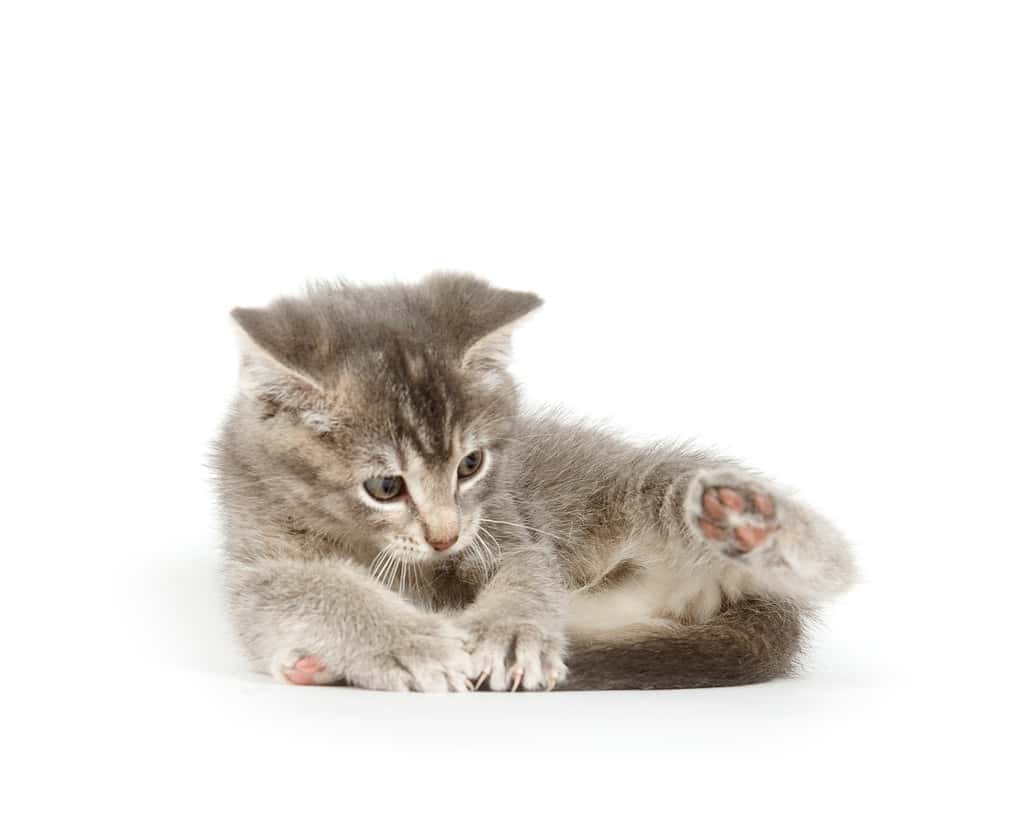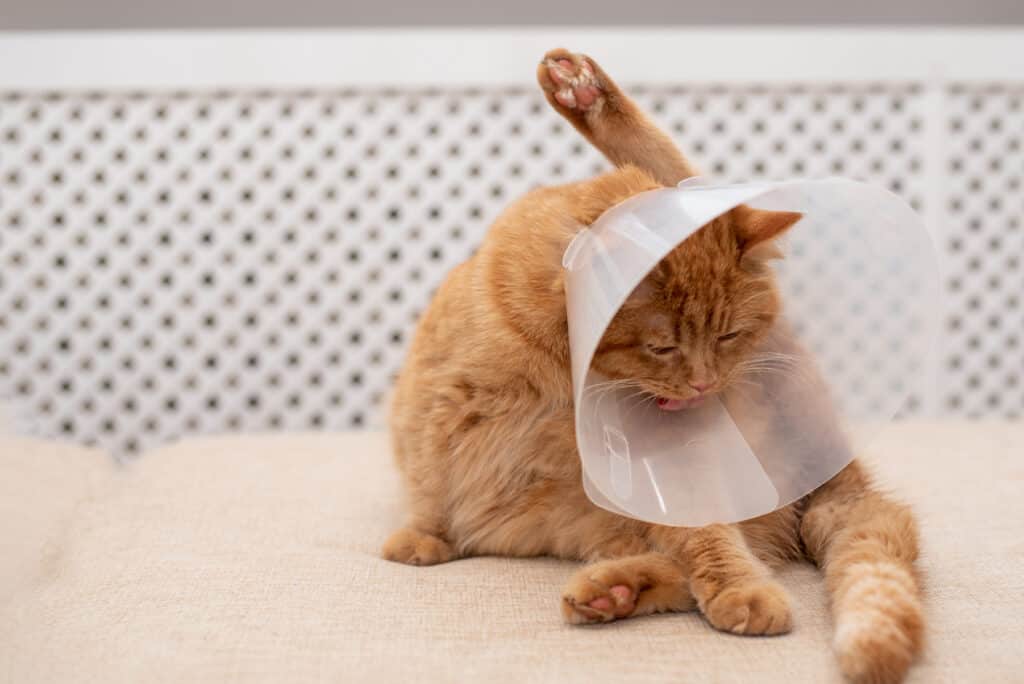When someone asks, “How can you tell if your cat needs their glands expressed?” which glands do they mean? Well, in most cases, they’re talking about anal glands. If you think that’s a gross subject, you’d be right! However, dogs and cats both possess two anal sacs (the proper term) inside the edge of the anus at approximately the 11 o’clock and 2 o’clock positions. These glands serve as a scent marker for cats (and dogs) when they have a bowel movement (poop). When cats don’t express them normally, health concerns can occur.
Unlike small dogs, cats rarely require anal gland expression. According to Dr. Shelly Wyatt of Northwood Hills Animal Hospital, “Although our feline friends with bobbed tails [such as Manx] experience these issues more frequently, any cat can develop anal sac problems. If your cat shows symptoms [of requiring their glands expressed], it’s important to visit the veterinarian immediately for this procedure.” She also told AZ Animals that cat anal glands are very sensitive and fragile and trying to express them on your own could result in anal gland impaction, infections, and even a rupture. All of these issues result in an extremely painful ordeal for your cat. When in doubt, go to the vet!
Let’s explore seven ways to tell if your cat needs its glands expressed below!
#1 Bum-Scooting: The Number One Sign Your Cat Needs Their Glands Expressed
The primary sign that your cat requires their glands to be expressed is bum-scooting. We’ve probably all seen this behavior — legs up, bum to the ground, and dragging it across the carpet, grass, or floor. When a cat does this, several health concerns may be the reason. Cats bum-scoot due to poop stuck to the area, worms making the bum itchy, and anal sac problems. The discomfort caused by the swollen glands causes the cat to try to relieve the pressure by scooting. Bum-scooting can lead to rug burn or other scrapes and scratches around the sensitive anal area. If your cat is bum-scooting, go to the vet!
#2 Excessive Licking

Cats lick themselves to get clean, but excessive licking of the bum can signify a problem!
©Konstantin Aksenov/iStock via Getty Images
Another huge sign that your cat needs an anal gland expression is when they lick at their back end excessively. We all know cats lick themselves to get clean, but if they’re constantly licking their bum, it’s usually a sign of difficulty back there! If your cat doesn’t leave their bum alone, take them to the vet.
#3 Biting at the Bum
Similar to licking, some cats that need their glands expressed nibble or chew at the area. Due to the pressure build-up, they want to relieve the pain. Chewing at the area can result in an anal gland rupture, which requires veterinary attention. Is your cat chewing on their bum? Then take them to the vet!
#4 Chasing Their Tail

Kittens chase their tail for fun, but in an adult cat, they might do this due to anal sac problems.
©Tony Campbell/iStock via Getty Images
While watching a kitten chase their tail is generally entertaining and harmless, this activity in an adult cat may point to a problem with the anal sacs. If your cat needs their glands expressed, they may spin around in a circle, trying to lick or chew at the area. If you see this behavior and are worried, go to the vet!
#5 Foul Odor
A cat’s anal sacs contain a foul-smelling fluid that normally expresses when they poop. However, if the sacs aren’t expressing fully, they may secrete small amounts of fluid. This fluid often lingers on the fur or furniture, producing an absolutely rank smell. This scent presents difficulty in removal since it is oil-based. If you smell a foul odor from your cat, take them to the veterinarian ASAP!
#6 Swelling
Another sign your cat requires their glands to be expressed is swelling in the area around the anus. Normally, the anal sacs are smaller than a green pea and cannot be seen with the naked eye. However, when they become impacted (when the gland becomes blocked), they may become significantly swollen. Swollen anal sacs make become infected and cause a fever. This swelling is very uncomfortable. Your cat might become lethargic and refuse to eat. Swollen bum? Off to the vet, you go!
#7 Holes Beside the Main One: When You Missed the Signs Your Cat Needed Their Glands Expressed

If your cat’s anal sac ruptures, they’ll have to wear a cone while it heals.
©Natalia Sem/Shutterstock.com
If you notice your cat suddenly has an extra hole back there, chances are they needed their glands expressed and you missed the signs. At this point, though, the anal sac has ruptured. Anal sac rupture requires a veterinary visit for flushing and packing the area. Most cats will have to wear a cone (aka an Elizabethan collar) to prevent them from licking at the area and causing additional damage. They also likely must take oral antibiotics to prevent infection. If you see holes in your cat that weren’t there before, don’t panic. Just take them to the veterinarian right away!
Final Thoughts on Cats Needing Glands Expressed
While it is uncommon for cats to need their anal glands expressed, it does happen occasionally. If your cat is a Manx or has a shorter tail than normal, they’re more likely to experience anal sac disease. When in doubt, go to the veterinarian. It’s always better to be safe than sorry!
The photo featured at the top of this post is © YNG Pictures/iStock via Getty Images
Thank you for reading! Have some feedback for us? Contact the AZ Animals editorial team.







